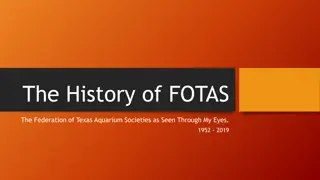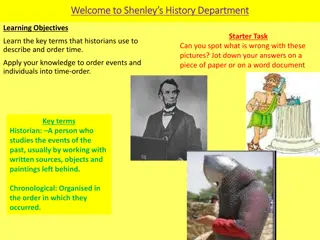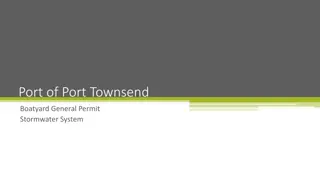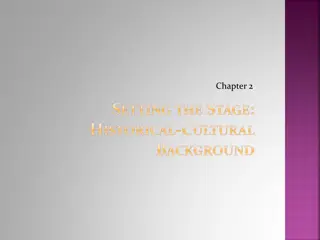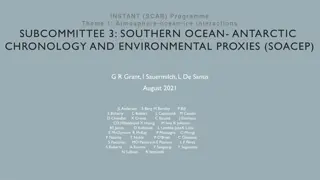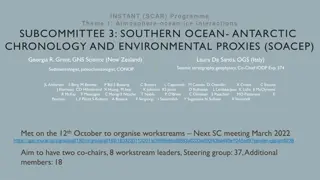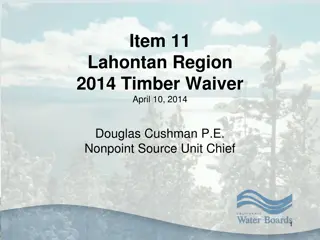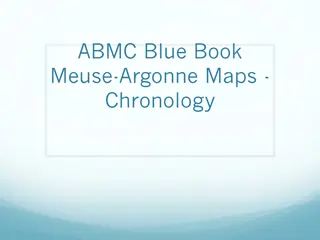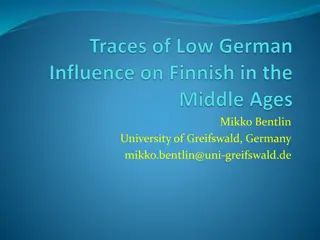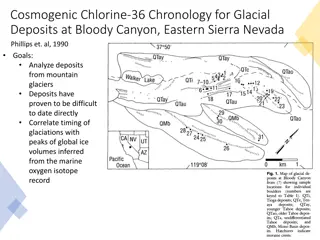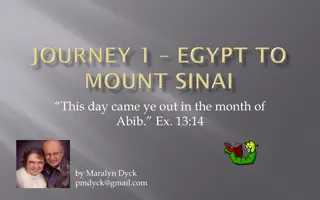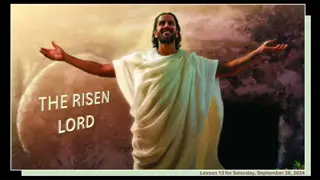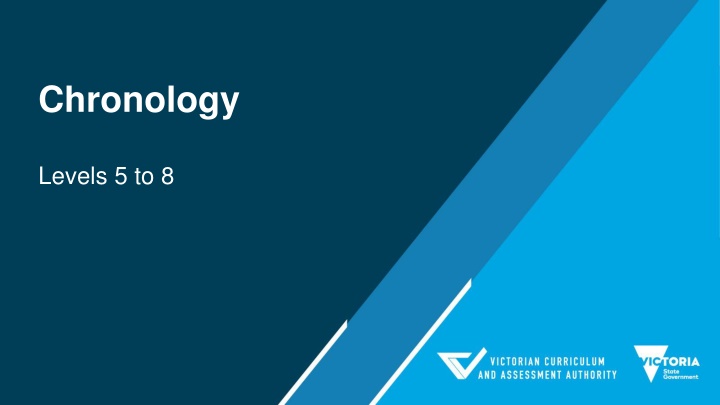
Chronology in Victorian Curriculum History
Explore the importance of chronology in historical reasoning and its role in the Victorian Curriculum History. Learn how students can sequence events, develop narratives, and analyze causes and effects to understand the continuum of history. Discover the levels of achievement standards and historical concepts at different educational levels.
Download Presentation

Please find below an Image/Link to download the presentation.
The content on the website is provided AS IS for your information and personal use only. It may not be sold, licensed, or shared on other websites without obtaining consent from the author. If you encounter any issues during the download, it is possible that the publisher has removed the file from their server.
You are allowed to download the files provided on this website for personal or commercial use, subject to the condition that they are used lawfully. All files are the property of their respective owners.
The content on the website is provided AS IS for your information and personal use only. It may not be sold, licensed, or shared on other websites without obtaining consent from the author.
E N D
Presentation Transcript
Chronology Levels 5 to 8
Introduction Provocation Chronology in the curriculum context Chronology in Victorian Curriculum History Chronology in the continuum of learning Towards the classroom Examples of practice Conclusion
Chronological thinking is at the heart of historical reasoning. Without a clear sense of historical time time past, present, and future students are bound to see events as one great tangled mess. Without a strong sense of chronology of when events occurred and in what temporal order it is impossible for students to examine relationships among them or to explain historical causality. Chronology provides the mental scaffolding for organizing historical thought. Stephane Levesque, Thinking Historically: Educating Students for the Twenty-First Century
Chronology in Victorian Curriculum History
Victorian Curriculum History Learning in History Achievement Standard Skill/Concept Historical Knowledge
Learning in History Chronology involves the arrangement of events in order of time. However, the sequencing of events is not an end in itself. It allows students to understand the sequence and flow of events and identify patterns of continuity and change, analyse cause and effect, distinguish between long-term causes and short-term triggers and provides the starting point and basis of explanatory narratives about the past. Victorian History Curriculum, Learning in History: Sequencing Chronology
Achievement Standard Levels 5 and 6 Achievement Standard Students sequence events and people (their lifetime) in chronological order, and represent time by creating timelines. Levels 7 and 8 Achievement Standard Students sequence events and developments within a chronological framework with reference to periods of time. Note the progression from Levels 5 and 6 to Levels 7 and 8.
Historical Concepts and Skills: Chronology Levels 5 and 6 Sequence significant events and lifetimes of people in chronological order to create a narrative to explain the developments in Australia s colonial past and the causes and effects of Federation on its people (VCHHC082) Levels 7 and 8 Sequence significant events in chronological order to analyse the causes and effects and identify continuities and changes (VCHHC097) Describe and explain the broad patterns of change over the period from the Ancient to the Modern World (VCHHC098)
Connections Levels 7 and 8 Chronology connects with: other Historical Concepts and Skills historical content knowledge instructional terms. Sequence significant events in chronological order to analyse the causes and effects and identify continuities and changes (VCHHC097) Describe and explain the broad patterns of change over the period from the Ancient to the Modern World (VCHHC098)
Connections: your turn Levels 5 and 6 Sequence significant events and lifetimes of people in chronological order to create a narrative to explain the developments in Australia s colonial past and the causes and effects of Federation on its people (VCHHC082) Identify: other Historical Concepts and Skills instructional terms.
Continuum of learning Levels 5 and 6 Levels 7 and 8 Levels 9 and 10 Achievement Standard Achievement Standard Achievement Standard Students sequence events and developments within a chronological framework, and identify relationships between events across different places and periods of time. Students sequence events and people (their lifetime) in chronological order, and represent time by creating timelines. Students sequence events and developments within a chronological framework with reference to periods of time. Historical Concepts and Skills Sequence significant events in chronological order to analyse the causes and effects and identify continuities and changes (VCHHC097) Describe and explain the broad patterns of change over the period from the Ancient to the Modern World (VCHHC098) Historical Concepts and Skills Sequence significant events in chronological order to support analysis of the causes and effects of these events and identify the changes they brought about (VCHHC121) Analyse and evaluate the broad patterns of change over the period 1750 present (VCHHC122) Historical Concepts and Skills Sequence significant events and lifetimes of people in chronological order to create a narrative to explain the developments in Australia s colonial past and the causes and effects of Federation on its people (VCHHC082)
Chronology and Historical Knowledge Where is chronology explicit? Use this structure to break down the knowledge content descriptions to understand the application of the skill. Where is there an opportunity for chronology? Where is chronology implied? Historical Knowledge Where is chronology necessary?
Historical Knowledge: Levels 5 and 6 Australia as a nation The significance of key figures and events that led to Australia s Federation, including British and American influences on Australia s system of law and government (VCHHK093) The different experiences and perspectives of Australian democracy and citizenship, including the status and rights of Aboriginal and Torres Strait Islander peoples, migrants, women, and children (VCHHK094) The stories and perspectives of people who migrated to Australia, including from one Asian country, and the reasons they migrated (VCHHK095) Significant contributions of individuals and groups, including Aboriginal and Torres Strait Islander peoples and migrants, to changing Australian society (VCHHK096)
Towards the classroom Levels 5 and 6 For the first time, students explore an extended sequence of events in one setting and observe how individuals, groups, ideas and decisions shaped the experiences of the people who lived there. The ability to sequence chronology underpins students learning of other historical thinking concepts; students must understand the order in which things happened before they can describe patterns of continuity and change, understand the purpose of sources created at different times during the period, or explain the causes of significant events. The when is an important clue that leads to the why . Students move from composing historical stories in the right order to thinking about how each person, event or decision is influenced by those preceding it. By the end of Level 6 they should have achieved a level of mastery over the concept of time by creating informative, sequential narratives that deepen their understanding. They are able to create chronological pathways and maps to organise their knowledge.
Towards the classroom Levels 7 and 8 Students think about chronological sequencing on several levels. They encounter big picture ideas such as the history of human civilisation and the contribution of archeology to our understanding of the past. Sequencing chronology helps students understand the patterns and commonalities across the societies they investigate and consider their legacies in the present day. For their study of a specific society, students use key dates to understand and create narratives about leadership, architectural features, conflicts, the spread of religious ideas, trade and exploration. Students are introduced to the conventions of reading and writing about chronology. This includes the use of BCE (Before Common Era) and CE (Common Era), and terms such as the 20th century to describe the period from 1900 to 2000. They also become adept at applying terms to describe time, such as long term and short term.
Indicative examples By the end of Level 6: By the end of Level 8: students construct a timeline that identifies significant events and lifetimes students can use chronological terms: for example, era, period, lifetime and so on students can use a timeline to identify significant events and developments students can use a timeline to construct a narrative explanation. students use timelines to identify patterns of change over time students use timelines to identify sequences of causation and consequences students explain broad patterns over large time periods in a written response students use timelines to identify significant events in the life of key individuals.
Language of Chronology Date Timeline Circa Year Time Prehistory Before Common Era Common Era After Annotated Epoch Century Before present Decade Sequence Chronology Long term Short term
Classroom ideas Levels 5 and 6 Create an enhanced timeline that identifies significant events, periods and developments. Play a mix-and-match game where students must sequence events in the correct order. Levels 7 and 8 Create an enhanced timeline and annotate it to identify patterns over time. Write a piece of historical fiction that sequences events in their correct order.
Example of practice Levels 5 and 6
2 Context Students should be able to sequence events in the correct order to fulfill a specific purpose. This could include identifying significant events, causes, consequences, changes or continuities. The correct sequencing of chronology is the beginning of the process and is foundational to further historical study.
3 1861 First Melbourne Cup 1857 All adult male British subjects in the colony of Victoria are entitled to vote 1833 or 1834 Convincing Ground Massacre near Portland 1834 The Hentys establish first successful British settlement in Portland 1842 New South Wales Constitution Act creates Australia s first representative legislature 1851 Colony of Victoria established 1880 Royal Exhibition Building in Carlton completed 1824 1825 Hume and Hovell cross the Murray River from the colony of NSW Events in the colony of Victoria 1856 Victorian Parliament established 1851 Gold discovered near Ballarat, initiating the Gold Rush 1901 Victoria becomes a State of the Commonwealth of Australia 1803 Settlement established at Sullivan Bay 1854 Eureka Rebellion 1770 Lieutenant James Cook in HM Bark Endeavour sighted land at Point Hicks 1883 Sydney and Melbourne linked by railway 1856 Stonemasons win eight-hour day 1857 Gas lights introduced in Melbourne 1835 Melbourne founded by John Batman 1860 Burke and Wills depart Melbourne Before 1700 Approximately 35 Aboriginal nations live for thousands of years in the region that becomes Victoria 1861 Melbourne's population reaches 125,000
4 Before 1700 Approximately 35 Aboriginal nations live for thousands of years in the region that becomes Victoria 1770 Lieutenant James Cook in HM Bark Endeavour sighted land at Point Hicks 1803 Settlement established at Sullivan Bay 1824 1825 Hume and Hovell cross the Murray River from the colony of NSW 1833 or 1834 Convincing Ground Massacre near Portland 1834 The Hentys establish first successful British settlement in Portland 1835 Melbourne founded by John Batman Events sequenced in chronological order 1842 New South Wales Constitution Act creates Australia s first representative legislature 1851 Colony of Victoria established 1851 Gold discovered near Ballarat, initiating the Gold Rush 1854 Eureka Rebellion 1856 Stonemasons win eight-hour day 1856 Victorian Parliament established 1857 Gas lights introduced in Melbourne 1857 All adult male British subjects in the colony of Victoria are entitled to vote 1860 Burke and Wills depart Melbourne 1861 First Melbourne Cup 1861 Melbourne's population reaches 125,000 1880 Royal Exhibition Building in Carlton completed 1883 Sydney and Melbourne linked by railway 1901 Victoria becomes a State of the Commonwealth of Australia
5 Before 1700 Approximately 35 Aboriginal nations live for thousands of years in the region that becomes Victoria 1770 Lieutenant James Cook in HM Bark Endeavour sighted land at Point Hicks 1803 Settlement established at Sullivan Bay 1824 1825 Hume and Hovell cross the Murray River from the colony of NSW 1833 or 1834 Convincing Ground Massacre near Portland 1834 The Hentys establish first successful British settlement in Portland 1835 Melbourne founded by John Batman 1842 New South Wales Constitution Act creates Australia s first representative legislature Annotate the events 1851 Colony of Victoria established 1851 Gold discovered near Ballarat, initiating the Gold Rush 1854 Eureka Rebellion 1856 Stonemasons win eight-hour day 1856 Victorian Parliament established 1857 Gas lights introduced in Melbourne 1857 All adult male British subjects in the colony of Victoria are entitled to vote 1860 Burke and Wills depart Melbourne 1861 First Melbourne Cup 1861 Melbourne's population reaches 125,000 1880 Royal Exhibition Building in Carlton completed 1883 Sydney and Melbourne linked by railway 1901 Victoria becomes a State of the Commonwealth of Australia
6 Before 1700 Approximately 35 Aboriginal nations live for thousands of years in the region that becomes Victoria 1824 1825 Hume and Hovell cross the Murray River from the colony of NSW 1834 The Hentys establish first successful British settlement in Portland 1835 Melbourne founded by John Batman 1851 Colony of Victoria established 1851 Gold discovered near Ballarat, initiating the Gold Rush 1856 Victorian Parliament established 1857 All adult male British subjects in the colony of Victoria are entitled to vote 1861 Melbourne's population reaches 125,000 1883 Sydney and Melbourne linked by railway 1901 Victoria becomes a State of the Commonwealth of Australia Refined chronology of the development of Victorian colony
7 Identify the five most significant events EVENT EVENT 1. 1856 Victorian Parliament established 2. 1861 Melbourne's population reaches 125,000 3. 1883 Sydney and Melbourne linked by railway 4. Before 1700 approximately 35 Aboriginal nations live in the region that becomes Victoria for thousands of years Explain your selections 5. 1851 Gold discovered near Ballarat initiating the Gold Rush
Example of practice Levels 7 and 8
2 Activity Key question: How can we use timelines to understand the past? Activity: Use the following slides and Levels 7 and 8: Chronology Student Handout to assess your students understanding of chronology.
3 Sequencing Chronology
4 A chronology of Japan under the Shoguns (c.794 1867)
5 empire emperor feudalism daimyo shogun sakoku divine wind shogunate imperial rule civil war dynasty sovereign We will need to understand the meaning of these words to learn about Japan under the Shoguns
6 Emperor Go-Daigo overthrows Kamakura shogunate Shogun Yoshimitsu unifies Japan again Warring States period begins Minamoto no Yoritomo becomes shogun 1337 AD 1333 AD 1392 AD 1467 AD 1185 AD Emperor Go-Daigo is challenged by Muromachi shogunate civil war follows
Discussion points How often do your students return to creating timelines or tables to help them understand the period they are studying? Do you ask students to describe the criteria they are using to decide which events or turning points are significant enough to be included in their timelines? Does your class play with different modes and presentation formats for timelines, analysing which are most useful for a particular investigation? What is the most powerful, informative timeline that you have ever developed with your students? Once a timeline is complete, do you press your students to analyse what light it shines on the narrative? How can we ensure that student-produced timelines are rich tasks and not just a series of dates and facts taken from Wikipedia? How do we design activities that cater for a wide range of learners?
Reflection activity Use the following thinking routine to reflect: What excites you about this idea? What do you find worrisome? What else do you need to know? What is your current stance or opinion?



